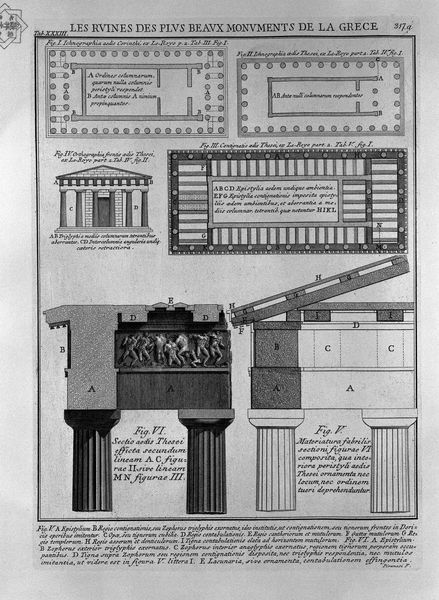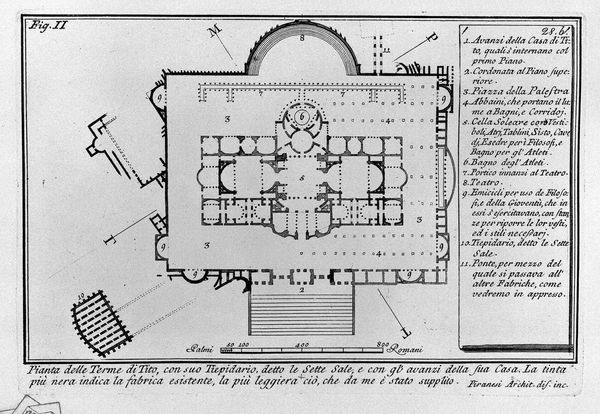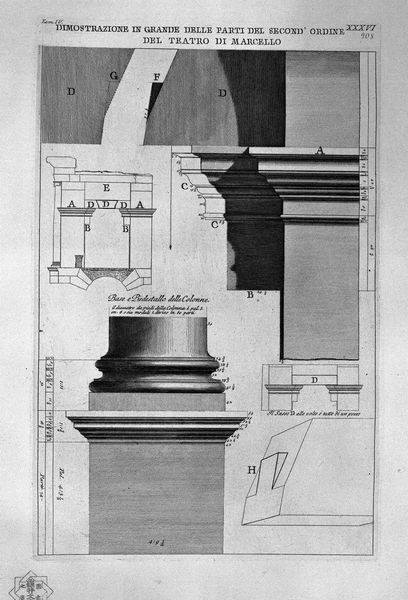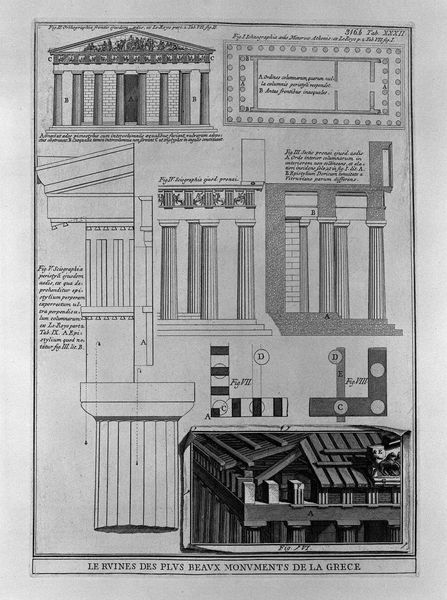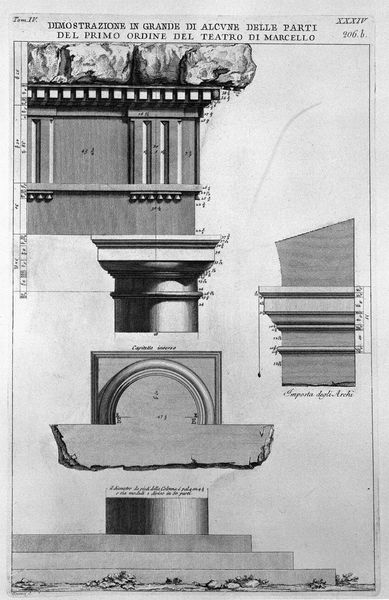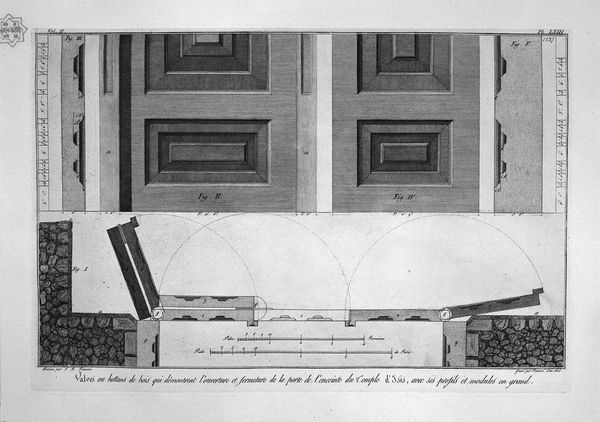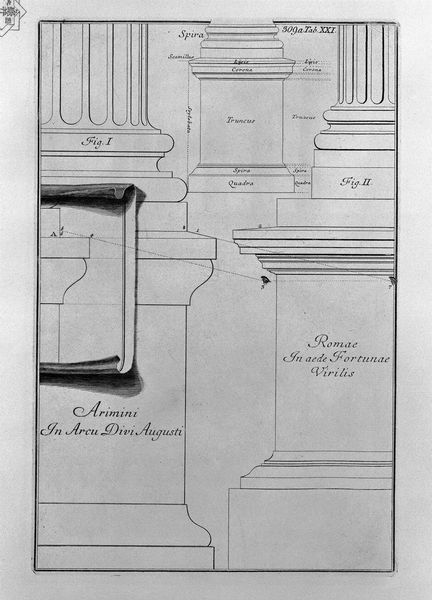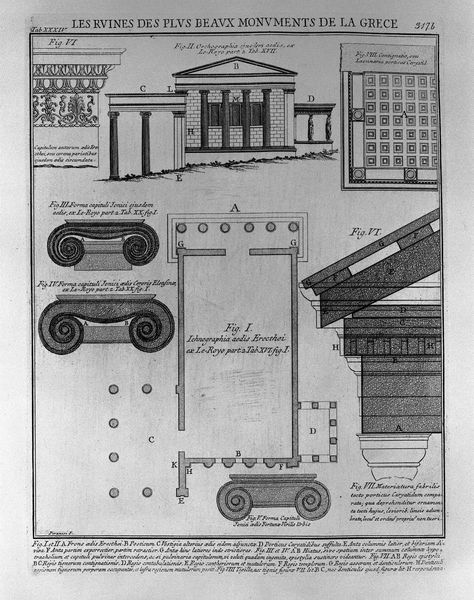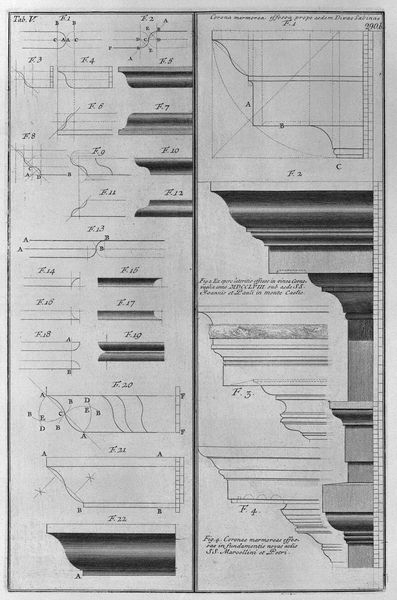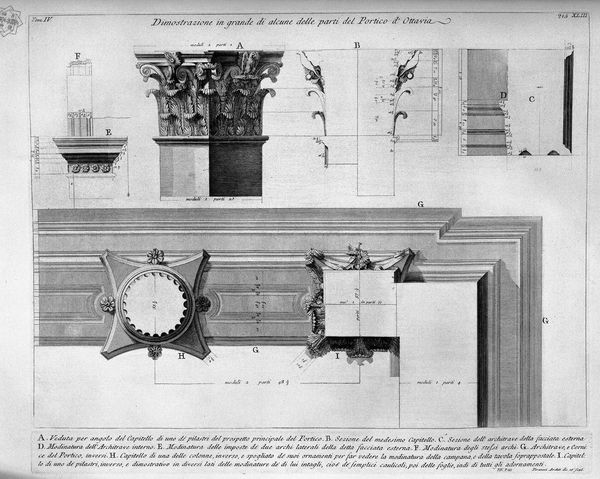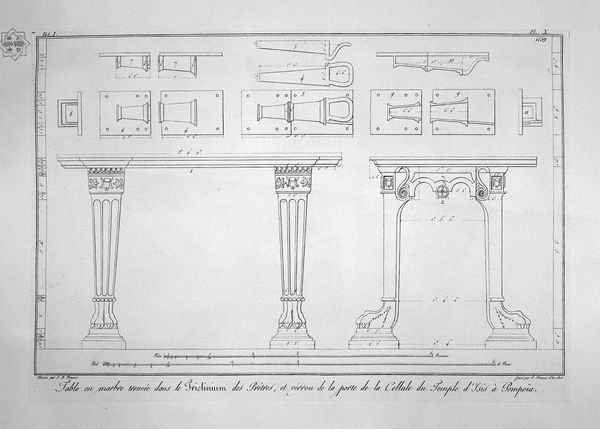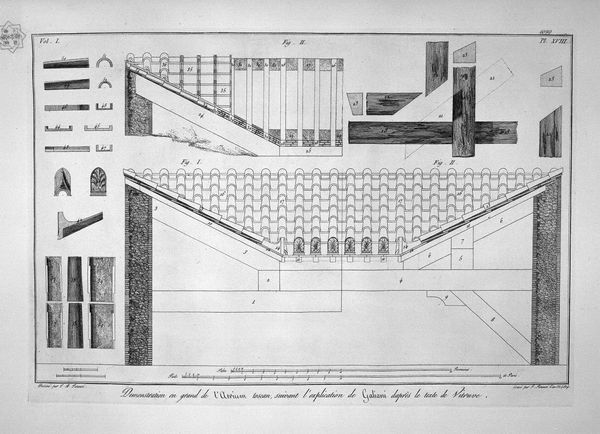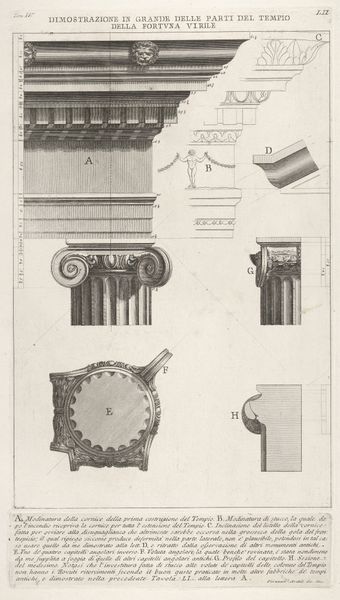
The Roman antiquities, t. 4, Plate XXXV. Great Vista of some of the first order of the Doric of the Theatre of Marcellus.
0:00
0:00
drawing, print, etching, engraving, architecture
#
drawing
# print
#
etching
#
greek-and-roman-art
#
geometric
#
ancient-mediterranean
#
history-painting
#
engraving
#
architecture
Copyright: Public domain
Editor: This is "The Roman Antiquities, t. 4, Plate XXXV. Great Vista of some of the first order of the Doric of the Theatre of Marcellus" by Giovanni Battista Piranesi, an etching that seems to be a technical drawing of architectural elements. It's striking how precise and detailed it is. What do you see in this piece? Curator: This print operates on many symbolic levels. Notice how Piranesi meticulously documents the Doric order, reflecting a deep engagement with classical ideals. He revives this "ancient" language of forms. But what happens when the present is obsessed by past glories? Editor: You mean that, in Piranesi's time, Rome was both modern and ancient at the same time? Curator: Precisely. The weight of history becomes palpable. It’s not merely a technical drawing; the rigid order also carries cultural memories and a latent melancholy. The engraving freezes time. Can you see how each component speaks to cultural authority and continuity? How do you read this tension between revival and stagnation? Editor: Now I see how the drawing style conveys a lot: while the geometry evokes perfection, its obsessive precision almost seems… anxious? Curator: Yes, I agree. The perfectibility is almost intimidating. But if the ruin already exists in perfect rendering, is this technical precision trying to control that historical loss? Perhaps. What feelings remain with you when looking at the totality of the image? Editor: The combination of precision and decay, I guess… The visual language becomes richer once you recognize those emotions locked inside. Curator: Absolutely. Visual language evolves. By looking at the "symbol" of ruins with that language, perhaps the original intention can persist beyond decay. A great paradox that speaks through time.
Comments
No comments
Be the first to comment and join the conversation on the ultimate creative platform.
